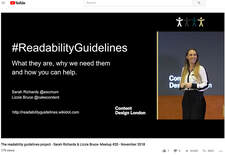I am really finding it challenging to stay motivated. I’ve worked from home for years, but not in such an isolated way. Going out for a meeting, lunch, coffee was often a reward for the tasks I accomplished. As both a professional and a creative writer, I found nuggets in this article that help with both challenges.
Struggling to read, or write? How to be productive in lockdown, TheGuardian.com, features tips from several authors. Here’s how creative writiers' ideas can help us as a professional writers.
Bite-Sized Pieces
Although the creative writers suggest ‘giving’ yourself time to sit and write, I think it is a good idea to write in time batches. Break it down into appetizer-sized tasks. The full meal deal might just be too much. This can help if you are inundated with interruptions, your day is interspersed with others' needs and you want to keep up, but not in a stressful, demanding way.
One Step At A Time
Another gem was to not feel the need to complete a whole project in one go. Accept that during this time you may be feeling more stressful about your to-do list. That’s normal considering the changes we’re going through. A schedule can help. Go one step at a time.
Keep It Simple
I know, people have been saying this forever. But it does make sense. Sometimes we just need to stand back, take a fresh look and get rid of some of the clutter in our work and creative lives. Try a new approach. Ask a colleague or friend how they are juggling things. Clear your work area.
Take A Break
Make sure it’s a real break, not a household chores or work break. Get away from your work station. Do some exercise or mediation. Just sit and look out your window. Have a chat with a friend. Check your garden or a neighbour.
Unplug
One author suggests unplugging—your internet! Scary? Maybe just shut down your computer rather than letting it ‘sleep’. Definitely turn down or off your phone at night. Our sleep is so important for our health, give it all the support you can.
So, whether you are writing a report, a short story, a novel, a film script, be resourceful in finding some help to get you started, keep you going and reward yourself as you move along.

 RSS Feed
RSS Feed
